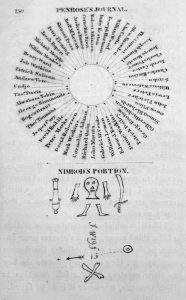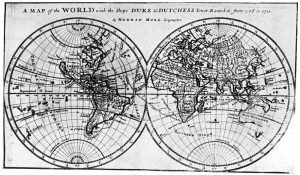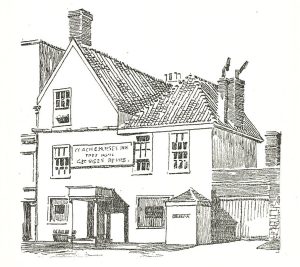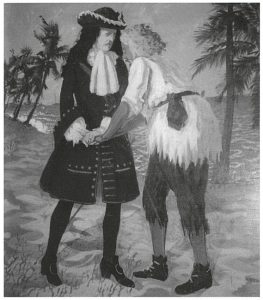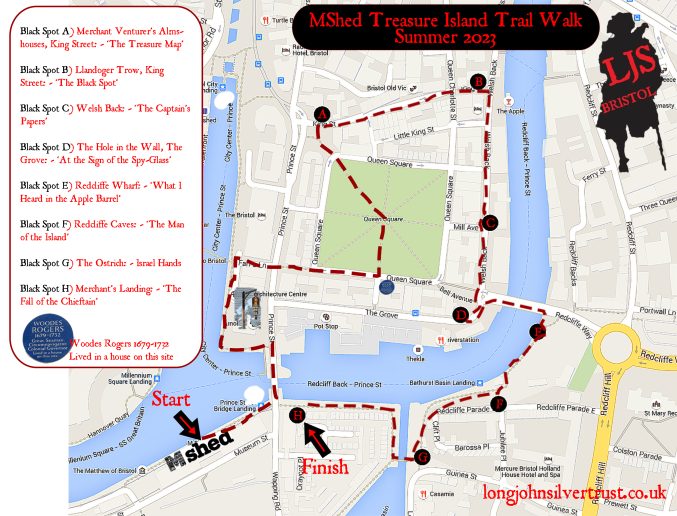M Shed’s Historical Walks: Pirates and Prejudice
Posted on by Alice Bush.
By walk guide Mark Steeds, author, and historian from Bristol Radical History Group
Along the walk, you will be regaled with many weird and wonderful facts about Bristol’s literary, maritime, and piratical past.
Did you know?
Bristol is home to the world’s first literary treasure map. Painter, author and marooned privateer William Williams (1721-1791) was a one-time resident of the Merchant Venturers Almshouses in King Street. He wrote the Journal of Llewellin Penrose, Seaman, in which he included a ‘pirate treasure map’. It wasn’t published until 1815. The idea was subsequently copied by Edgar Allan Poe for his story The Gold-Bug, first published in 1843, and via The Gold-Bug, Robert Louis Stevenson for his novel Treasure Island, first published as a book in 1883.
English sea captain Woodes Rogers (1679-1732) trained as a mariner in Bristol. He went on a privateering voyage from 1708 to 1711 and famously rescued the castaway Alexander Selkirk from the island of Más a Tierra in 1709. The story is said to have at least in part provided Daniel Defoe with material for his novel ‘Robinson Crusoe’, first published in 1719.
Defoe met with Rogers, and may have also met Selkirk – but where? 20th century Bristol historians have long argued over which city pub the two met in, with the Llandoger Trow being the favourite, primarily due to post-war owners the Berni brothers claiming all sorts of amazing things for the pub. 19th century historians claimed it was The Star in Cock and Bottle Lane, directly above Bristol Castle’s old dungeon keep.
Questions, questions…
In his novel, Treasure Island, Robert Louis Stevenson refers to Bristol pub landlord Long John Silver and his tavern The Spy-Glass Inn. Is it possible that the pub known today as The Hole in the Wall, formerly known as The Coach and Horses, in the Grove, was the model for this inn?
What’s the difference between pirates and privateers?
What drove people such as ruthless Henry Morgan to turn to piracy? He left the city in the 1650s to become an indentured servant to a Bristol cutler in Barbados, joined Admiral Penn’s ‘Western Design’ (an English expedition to conquer the Spanish West Indies), famously raided Panama and ended up Jamaica’s Governor…
What roles did West Country botanist-buccaneer William Dampier and former slave-ship surgeon Thomas ‘Cap’n Quicksilver’ Dover play in Woodes Rogers’ famous privateering voyage?
All of these questions and many more will be explored… so, don’t dally!
Join our walk and find out more… and, in the meantime, here be a map to help you on your way…
Click on the images to read the captions.
M Shed’s historical walks are led by volunteer guides with a wealth of knowledge and an infectious passion for their subject. All the walks at M Shed are free, donations are gratefully received, and bookings can be made in advance by calling 0117 352 6600.
Find out when the next Pirates and Prejudice walk is.
Other blogs in this series:
Old City | Redcliffe | Windmill Hill | Floating Harbour | 1831 Riots | Bristol Abolition
